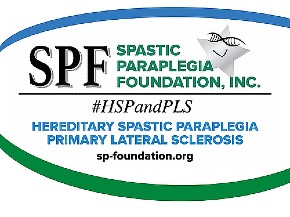A month before the scheduled surgery, the four researchers were ready to chaperone the brain cells on their 190-mile journey. They never anticipated they were in for “The Amazing Race”-meets-“ER.”
It was after midnight on a late summer night in 2017, and they had less than eight hours to get the cells by ambulance, private plane, and another ambulance from Dana-Farber Cancer Institute in Boston to Weill Cornell Medical Center in Manhattan. If it took longer, the cells would almost certainly be DOA, and so might the researchers’ plan to carry out an experimental transplant surgery unprecedented in the annals of medicine: replacing the dysfunctional brain cells of a Parkinson’s disease patient with the progeny of an extraordinary type of stem cell. Created in the lab from a patch of the patient’s own skin, these cells, it was hoped, would settle into the brain like they belonged there and permanently restore the patient’s ability to walk and move normally.
If successful, the surgery could forever change Parkinson’s disease, from an inexorable, cruel, and sometimes fatal decline to — for at least some patients — a condition that can be successfully treated.
Bin Song, a stem cell biologist at McLean Hospital outside Boston, took the elevator to Dana-Farber’s cell-manufacturing facility on the 11th floor. There, after six hours harvesting and testing the practically newborn dopamine-producing brain cells, technicians placed them in sterile vials, carefully nestled the vials into a picnic-sized cooler that would keep them at 4 degrees Celsius, and handed it to Song. She raced down to a waiting ambulance.
The driver peeled out, headed for Hanscom Field 20 miles away to rendezvous with a Massachusetts General Hospital neurosurgeon and McLean stem cell biologist Kwang-Soo Kim, Song’s boss, for the flight south. But they got lost on the way, putting them behind schedule even before they boarded a private medical jet. The cooler sat on a stretcher.
The Beechjet 400 landed at Teterboro Airport, across the Hudson River from Manhattan. The researchers piled into another ambulance — whose driver refused to turn on the siren: It was against state law unless a patient’s life or health is in danger. Kim couldn’t convince him that such was the case. They crawled through traffic to the George Washington Bridge and down FDR Drive.
They pulled into Cornell’s driveway two hours late. Kim grabbed the cooler and handed it to a waiting Cornell official, who carried it up to the cell facility. There, a technician loaded syringes with the brain cells. Then Kim saw the cells: They had formed very un-therapeutic-looking clumps. If this had been the day of the actual surgery, it would have been ruinous.
This, Kim thought, is why we do practice runs.
A month later, when the cells journeying from Boston to New York were to actually be transplanted, it seemed that Kim’s nearly decade-long project was cursed: He learned that Hanscom would be closed on Sept. 5, the day of the surgery. They had to leave from the much busier Logan Airport.
But the air ambulance was wheels up at 5 a.m. and arrived at Weill Cornell at 6:30. Technicians carefully sucked the cells into special syringes, which Song speed-walked to the surgical suite where the neurosurgeon and the patient awaited.
In late 2018, news reports said surgeons in Japan had, that October, performed an experimental procedure that had been on neurologists’ wish list for more than a decade: transplanting into the brain of a Parkinson’s patient replacement cells created from the patient’s own skin cells using a Nobel-winning protocol. It was, claimed the reports, a first.
It wasn’t.
Rumors were flying within the small community of stem cell biologists who hoped to treat Parkinson’s that someone besides the Japanese group had done it. But who? And when? Despite rampant speculation, none knew that in September 2017 in New York, surgeons had carried out the first such surgery.
It was, said James Beck, chief scientific officer of the Parkinson’s Foundation (which was not involved in the work and did not know about it), “where we knew the field should be going. It represents the potential future for Parkinson’s disease.”
Details of this pioneering therapy will be revealed for the first time on Wednesday in a medical journal. But for nearly two years, STAT has been chronicling how it happened. This is the story, based on interviews with the scientists, the doctors, and the patient himself.
‘I am willing to fund the work’
Apart from offers of penis enlargers, this was the most obvious spam he’d ever seen, Kwang-Soo Kim thought as he scrolled through his inbox on May 2, 2013. A name he’d never heard of was atop an email that was effusive in its praise, calling Kim’s research at McLean, on stem-cell therapy for Parkinson’s disease, the “most promising” he’d ever come across.
“I am willing to fund the work,” the mysterious George Lopez had written, “whatever it takes to go twice as fast. … I hope to benefit from that work. If not me, mankind will be better.”
Lopez, Kim would soon learn, had himself been diagnosed with Parkinson’s nearly a decade earlier. One evening, while his wife was bedridden at their southern California home with the breast cancer that would take her life, Lopez told her he’d been experiencing a tremor, a staccato shaking when his hands weren’t otherwise moving.
“So?” his wife, Diana Kostyra Lopez, asked. “I think I have Parkinson’s,” Lopez said. “You don’t have Parkinson’s,” she said dismissively.
“The way she said it, it made me feel stupid,” Lopez recalled in a long discussion with STAT in 2018. “It also made me feel better.”
Soon, however, neurologist Carolyn Neff confirmed his dreaded hunch: He had Parkinson’s disease.
An estimated 1 million people in the U.S. do, and about 60,000 new cases are diagnosed each year. Although the ultimate cause is a little-understood combination of genetics and environment, the immediate trigger is the loss of midbrain dopamine-producing neurons, which sit in the brain’s substantia nigra and project into the dorsal striatum. That neural highway controls movement. When dopamine cells die, patients suffer tremors, stiffness, and difficulty walking. In the worst cases, they must use a wheelchair and become unable to bathe, feed, and otherwise care for themselves.
Its prognosis is bleak. There is no cure and “no treatment that can slow down or stop the disease process,” Kim said.
As Lopez well knew. Once an internist, he had stopped practicing after a patient of his died when an IV accidentally disconnected — though he still says “call me Doc” when you first meet him. In 1984, he founded ICU Medical, in San Clemente near his home. The company manufactures medical equipment, including catheters and IV systems such as those used for chemotherapy. Lopez invented the “ClickLock,” which keeps IV components snapped in place. It prevents a repeat of what happened to the patient he lost. He also invented the “Diana,” a device for safely mixing powerful drugs. He named it for his wife, who died on Christmas Eve 2006, at age 67.
Lopez had always been an active sportsman, biking and swimming and winning spearfishing tournaments. With the new diagnosis, “I became extremely depressed,” he said. “Of all the people to be hit with Parkinson’s disease, which locks you in your body like a prisoner, I felt, I shouldn’t have been afflicted with it if there is any fairness in the universe. But of course, there isn’t.”
“I shouldn’t have been afflicted with it if there is any fairness in the universe. But of course, there isn’t.”
GEORGE LOPEZ ON BEING DIAGNOSED WITH PARKINSON'S DISEASE
Lopez began taking standard Parkinson’s drugs, medications like carbidopa and levodopa and rotigotine, which replace the brain’s AWOL dopamine. But the drugs eventually stop working. Tremors worsen and the ability to walk deteriorates. By 2013, Lopez knew he was approaching that point.
No more being a passive patient, he decided. First as a physician and then as a businessman, Lopez said, “I always took challenges head on and with a team.” The best chance for a cure, his neurologist told him, was stem cells. She happened to have a flyer for a “Stem Cell Summit” coming up in April in Boston. From the list of speakers and their arcane titles, “it didn’t look like something for the faint of heart,” Lopez said. Nevertheless, he shelled out the $3,000 registration fee and flew east.
In the sea of nearly impenetrable technical presentations, one stood out: Kim’s. The McLean scientist described creating patient-specific midbrain dopamine neurons, the kind that die in Parkinson’s disease, from patients’ skin cells. “I thought there was something there,” Lopez said. He tried to find Kim during a break but the scientist had disappeared.
Kim had dashed back to McLean, where he is director of the Molecular Neurobiology Laboratory. He wasn’t finishing a crucial experiment; he was grinding out funding applications. After years of having as many as five National Institutes of Health grants, totaling $1.1 million in both 2011 and 2012, to develop patient-specific brain cells for Parkinson’s, NIH budget woes had cut him down to one, for $335,000.
He was despondent about having to lay off lab workers, especially when he felt closer than ever to achieving his goal.
‘It was a disaster’
The first transplants of dopamine neurons into the brains of Parkinson’s patients came in the late 1980s. Surgeons used neurons from the brains of aborted fetuses, as many as 16 fetuses per patient. Many physicians found that unethical, however, and although scores of Parkinson’s patients have received fetal transplants, it has never been clear how beneficial they are or whether long-term immunosuppression was required to keep the foreign cells from being rejected. In any case, most of the transplanted cells seemed to die.
Like many other stem cell biologists, Kim believed that the source of stem cells should not be fetuses, and not embryonic stem cells, but the patient’s own cells. In 2009, he published a much-praised paper describing how to safely turn adult fibroblasts — connective cells from the skin — into induced pluripotent stem cells. Such “iPS cells” are almost embryo-like in their ability to morph into any of the body’s specialized cells — muscle and heart and liver and brain and more.
Kim’s recipe was a bespoke version of one that, in essence, puts adult cells into a “Back to the Future” DeLorean. And once they had traveled back in time, developmentally speaking, all it took was a little encouragement (in the form of nutrients and other biochemicals) to make those iPS cells turn into any of the body’s specialized cells — such as the brain neurons that produce the neurotransmitter dopamine.
The original iPS cell methodology, which won inventor Shinya Yamanaka a 2012 Nobel Prize, used a standard laboratory virus to ferry a quartet of “reprogramming genes” into the fibroblasts. Kim felt he had made a major advance from Yamanaka’s work. Some scientists feared the genes might land in the wrong places on a cell’s chromosomes and inadvertently inactivate tumor suppressor genes, or activate cancer-causing genes. That “could be a disaster if the cells were used therapeutically,” Kim said. The viruses, he decided, had to go.
After years of trial and error, he reported in the 2009 paper that he had produced the four Yamanaka factors in E. coli bacteria, purified them, and attached them to a small molecule. That molecule, a peptide, penetrated cells like a certain wooden horse carrying Odysseus, Ajax, and their crew across the walls of Troy.
Other stem cell experts thought Kim’s was a solution in search of a problem. His claim that his recipe was safer than using a virus “had been irritating me for a while,” said stem cell biologist Jeanne Loring of Scripps Research Institute. Years later, in a 2016 study, she and colleagues would conclude that the Yamanaka method “did not induce mutations as Kim had claimed,” she said.
Despite the doubts, Kim pressed on. But when he tried to scale up production of iPS cells, he could get E. coli to make just two of the four Yamanaka factors. “It was a total dead end,” Kim said. “After the [2009] paper, I got hundreds of emails saying, ‘Oh, you solved the problem!’” of producing iPS cells without viruses. “But I couldn’t make it efficient enough. It was a disaster.”
Making the process work on a commercial scale would require an industrial-size lab and a battalion of technicians. Kim had neither.
That’s when he got Lopez’s email.
After reflexively dismissing it as a prank, Kim reconsidered. This guy spent thousands of dollars to attend the stem cell meeting. Maybe it’s not a hoax.
The next day Kim replied, thanking Lopez for his interest. They decided to meet at McLean, where Lopez again asked Kim what it would take to get the research into patients sooner. “$1 million or $2 million,” Kim said.
To this day, Lopez doesn’t know if Kim pulled the figures out of thin air. (Kim says he made a quick estimate.) But he pulled out his checkbook and made out a check to McLean for $2 million. Kim thought it would bounce. It didn’t.
With Lopez’s funding, Kim hired more lab help and sped up his experiments. One by one, he and his team broke through the obstacles that had kept his iPS cell recipe from scaling up. (Harvard University, McLean’s parent institution, has filed for a patent on Kim’s differentiation technique, and licensed it to Wisconsin-based stem cell company Cellular Dynamics.) Crucially, the stem cells easily turned into the midbrain dopamine neurons that Kim — and now Lopez — hoped would treat Parkinson’s disease.
Kim knew it would take tens of millions of dopamine neurons to have a prayer of helping a Parkinson’s patient. The recipe for turning undifferentiated iPS cells into dopamine neurons wasn’t perfect, however, which presented a problem: The remaining iPS cells can seed tumors.
“Even after two or three weeks of differentiation, there can remain undifferentiated cells,” Kim said. If he turned 99.9% of iPS cells into dopamine neurons, that would leave 10,000 iPS cells. Hitting 99.99% would leave 1,000. How efficient was efficient enough? “We realized we needed to remove all of them,” Kim said.
That meant looking for a killer. Kim and colleagues in South Korea pored over a database of compounds, searching for any that target a gene called survivin, which is abundant in iPS cells. They got a hit: quercetin. Testing the Chinese herbal compound on his iPS cells, Kim found, “if you treat the cells once, for 12 hours, while they’re differentiating, quercetin completely removes the undifferentiated cells.”
It was time to start thinking about putting the cells in someone’s brain.
Stem cells (left) produced from the skin cells of adults are grown in lab dishes, transforming into dopamine neurons (right) like those used for the transplant.MCLEAN HOSPITAL
‘Who are you?!’
Lopez says he funded Kim’s research with no plan that he would be the first patient, though his initial email to Kim shows that he nevertheless hoped to be. “I doubted he could go fast enough to do me any good,” he said. That was about to change.
Kim’s progress made Lopez decide it was time for a phone call. Who, he asked his neurologist in late 2014, is the best neurosurgeon you know? Dr. Jeffrey Schweitzer, Neff replied.
Lopez reached Schweitzer at his San Diego clinic while he was with a patient. Schweitzer heard an unfamiliar voice: “How would you like to be known as the neurosurgeon who cured Parkinson’s disease?” the man asked.
“Who are you?!” Schweitzer replied. Lopez introduced himself, and Schweitzer promised to call back in a couple of days.
Lopez’s phone rang 20 minutes later.
After hearing a bare-bones description of what Lopez was putting together — Schweitzer already knew Kim’s work — the neurosurgeon said, “I’m in.”
Kim kept making the stem cells, testing them for mutations, and turning them into dopamine neurons. He injected those into the brains of more than 100 rats whose own dopamine-making cells had been obliterated with a neurotoxin. By 2016, Kim said, those experiments “showed that the transplanted cells were functional,” treating the rats’ Parkinson’s symptoms.
Kim’s progress gave Lopez hope. He was fading, however. The last time he’d gone spearfishing (he once held the world record for the largest blue marlin) was 2009. He had put away his mountain bike. In 2014, he had retired as chairman and CEO of ICU Medical. By 2016 his pain was nearly constant. He struggled to lift himself out of a chair.
“How would you like to be known as the neurosurgeon who cured Parkinson’s disease?”
GEORGE LOPEZ IN A PHONE CALL TO NEUROSURGEON JEFFREY SCHWEITZER
Meanwhile, the medical team came together. Schweitzer was on board to do the operation with neurosurgeon Bob Carter of the University of California, San Diego. When Carter moved to Mass. General in 2017, he recruited neurologist Todd Herrington. Schweitzer soon moved across the country to join them at the Boston hospital.
They discussed doing the surgery in a country with lax medical regulations. They debated what to tell the Food and Drug Administration. They talked to lawyers. They hired (with Lopez’s money) a former deputy director for regulation at the FDA to advise them; he said what they were proposing would take five years and $5 million just to assemble the paperwork and gather enough data on, among other things, the quality and characteristics of the cells they proposed to transplant.
And then the team made a breakthrough that seemed as miraculous as anything they were doing in the lab. In January 2017, the FDA signed off on the 2,500-page “compassionate use” protocol they had submitted, green-lighting a one-patient experiment.
By then, they had a volunteer. Schweitzer and other physicians who examined Lopez concluded that he was a good candidate for the surgery, and Lopez was cleared to receive the dopamine-making brain cells that Kim had created from his fibroblast cells. With his medical background, Lopez understood the potential risks of the therapy, Kim explained: “He wanted to be the first patient.”
Everything was seemingly set. But there was one last hurdle.
Schweitzer, who suspected that kludgy instruments were one reason for the failure of fetal cell transplants for Parkinson’s, had developed a new device to avoid that problem.
“You can’t teleport cells into a brain,” Schweitzer said. You need a needle that delivers the cells to a precise spot and does so without squeezing them. Yet in some previous cell therapies, “more than 90% of the cells died shortly after transplantation,” Schweitzer said, probably because the needles plunged the cells into the brain as one big ball. That gave the cells no access to oxygen or nutrients.
Schweitzer therefore developed a motor-driven syringe “to keep the cells from blasting out the bottom of the needle” in one blob, he explained, and instead deposit them “as you draw out the needle.” He worked with the manufacturer to build an off-the-shelf syringe that would extrude 2 microliters of cells per minute into the tract created when the needle entered. When they tried it in rat and pig brains, the syringe left behind a nice line of cells with access to nutrients and oxygen.
There was only one problem. The device that drove the needle into a patient’s skull didn’t fit into the imaging devices at MGH. The hospital could have bought new equipment, but it would have taken months to train someone on it. Or the team could have asked the FDA to OK the use of a standard needle rather than Schweitzer’s, but that would also have taken months of paperwork. Kim had a better solution: He called a former colleague at Weill Cornell, which had the requisite hardware and was willing to let surgeons do Lopez’s brain cell transplant there.
That meant that getting Lopez’s cells from the manufacturing site at Dana-Farber was going to require an airlift. That’s why Kim and his colleagues made the trial run from Dana-Farber to Cornell and, on Sept. 5, 2017, did it for real.
That morning, a team of surgeons set up MRI and CT images of Lopez’s brain on a workstation to guide the “neuronavigation.” With Lopez in an anesthetic sleep, his head immobilized in a Leksell stereotactic frame, Cornell neurosurgeon Michael Kaplitt went in: With Schweitzer standing over his shoulder and the rest of Lopez’s team watching from a roped-off corner, he drilled into Lopez’s skull about an inch behind the hairline and half an inch to the left of the brain’s center. It was a spot that would spare crucial areas of the cortex.
Grasping the first of three syringes preloaded with a total of 4 million dopamine cells, Kaplitt slowly pushed it into the putamen, a region involved in movement. Then, withdrawing it, he carefully released the plunger so the syringe left behind a tiny trail of cells — exactly the nice line Schweitzer had hoped for.
A stroll to Times Square
Lopez had barely settled back into his hospital bed after the four-hour operation when he felt his muscles strengthening and the tremors dissipating. He threatened to arm-wrestle the surgeon who came to check on him. And he told his personal assistant that he wanted to get the heck out of the hospital and take a walk. “I said, this is what it feels like to be normal,” Lopez recalled.
Lopez, his son, and the assistant walked the 2 miles to Times Square under a nearly cloudless sky, in a balmy 70 degrees with only a light wind fluttering the awnings along Broadway. Lopez had had his new dopamine-producing neurons only a few hours, but it already felt like Lourdes had slipped through a wormhole in the space-time continuum and landed in Manhattan.
It was the sort of description that made his physicians squirm. As Lopez and his doctors recounted the saga a year later, Carter brought the discussion crashing back down to reality. He didn’t dispute that Lopez felt and moved much better in the immediate aftermath of the cell implants. But that did not mean they worked.
For one thing, simply mucking about in the brain’s striatum can release dopamine. That could alleviate Parkinson’s symptoms in the short term. For another, sticking needles into the brain can kill cells, and cells in their death throes (even the transplanted neurons) often release all their dopamine in one big burp; again, symptoms temporarily fade. Finally, expectation effects are very strong in Parkinson’s disease: Anticipating improvement can release dopamine.
“We’ve seen this sort of immediate ‘I feel better’ before,” said Carter, who is now chief of neurosurgery at Mass. General. It takes much longer, on the order of months, for dopamine-neuron progenitor cells like those Lopez received to form synapses with existing neurons and thereby start to restore lost motor functions.
Lopez’s dopamine high and the feeling that his brain and body were their pre-Parkinson’s selves lasted two days. Then he was “back to baseline”: no worse, but no better. Still, he said, “what we did was stop the deterioration. They gave me another shot at life.” Without the cell implants, Lopez said, “I think I would be dead now.”
At the insistence of the FDA, the procedure at Cornell shot cells into only the left side of Lopez’s brain: The agency said that if things went south, it would be twice as bad if Lopez had cell implants on both sides of his brain. “I disagreed,” Lopez said. “I should have had both sides done” at once. By requiring two surgeries, he said, the FDA “doubled the risk and the cost.”
But the first procedure didn’t seem to cause harm: no infection, no tumors, no hemorrhaging, no worsening of symptoms. On March 6, 2018, another batch of dopamine cells made from Lopez’s skin cells underwent a 20-minute journey from Dana-Farber, not to Manhattan but to Mass. General, which was now equipped to do the surgery. Schweitzer transplanted them into the right side of Lopez’s putamen.
This time, Lopez didn’t have a Lourdesian experience. No one is quite sure why, but it might be that fresher cells (no hours-long trip to Manhattan) don’t give the brain a quick dopamine hit. But they might form enduring synapses. Eventually.
Given everything that might have gone wrong, Carter says Lopez was courageous to have the experimental surgeries for this pilot study. “I don’t think I’m courageous,” Lopez told STAT, adding with a smile, “Though it’s true, we didn’t know if my head was going to blow up.”
Lopez said he never intended to be the star of this story. His $2 million check to McLean was meant to accelerate Kim’s research, not put him first in line to receive the experimental treatment. The financial support “wasn’t conditioned on him being the patient,” Carter said.
Medical and scientific groups, such as the International Society for Stem Cell Research, warn against “pay to play” arrangements in which wealthy people buy their way into clinical trials. But there are few hard-and-fast prohibitions, and in Lopez’s case, the ethics boards at both Mass. General and Cornell OK’d the surgeries.
Since the 2018 surgery, Lopez has received regular brain scans, looking for any hints of tumors as well as clues to what the transplanted cells are doing. A special version of PET imaging suggests that in the areas where Kaplitt and then Schweitzer dribbled out 4 million cells, they are churning out dopamine (according to scans conducted every few months, most recently this March), and have apparently “engrafted,” or made long-term connections with other neurons — including, crucially, in motor regions.
The 18 months of data “was the minimum we thought we needed to get a sense of Doc’s long-term trajectory,” said Herrington, the Mass. General neurologist. With anything less, it would be difficult to rule out that any improvement was due to a placebo effect.
There is no biomarker for Parkinson’s. The only way to assess a therapy’s impact is by tests of rigidity and tremor, as well as subtler clues such as voice strength and speaking ability.
“Doc has demonstrated a number of areas of functional improvement that are hard to argue with,” Herrington said in September 2018. Lopez had stopped wearing shoes with laces — his fingers couldn’t manage to tie them — but by the time of that conversation, they could do so. He has gone free diving, which requires strength and postural control. Late last year, Lopez, now 69, sent his medical team a video showing him swimming across a pool, something he’d given up for fear of drowning.
The researchers will report the results of their pilot study in a scientific publication this week. They declined to share that video, or other images of Lopez, until after the paper is published, but emphasized that, at most, the transplants show modest effectiveness. Lopez still takes almost as much Parkinson’s medication as before.
“We didn’t cure him of Parkinson’s,” Carter said. “I like to think we stabilized him.”
Much of the improvement in symptoms and quality of life is self-reported. That might reflect not only the placebo effect, but also Lopez’s unique role. “He spent a lot of money on this,” said the Parkinson’s Foundation’s Beck. “He wanted it to work,” which can be partly self-fulfilling.
Ultimately, only a rigorous clinical trial can show whether the stem cell therapy helped. The researchers have met with FDA officials about starting one.
Even if, many years hence, the therapy proves itself, Beck offers a reality check: “Doing iPS cell transplants for every Parkinson’s patient,” he said, “would cost a fortune.”
“A lot of this comes down to scale-up and how to make cell transplants beneficial to a wide variety of patients,” agreed Brian Fiske, vice president for research at the Michael J. Fox Foundation for Parkinson’s Research, which was not involved in the study. If stem cells are made from individual patients, “it adds a lot of complexity to your manufacturing process” compared to having a few cell lines that can be matched to many patients, as scientists in Japan are trying to do. “But until we try these different options, we won’t know which is superior,” Fiske said.
Kim, whose decision to open Lopez’s email seven years ago set in motion this saga, hopes a clinical trial validates his work even more than Lopez’s experience has. But he is at peace with what he and his colleagues have achieved so far.
“The Talmud,” he points out, “says that to save one life is equivalent to saving the entire world.”











